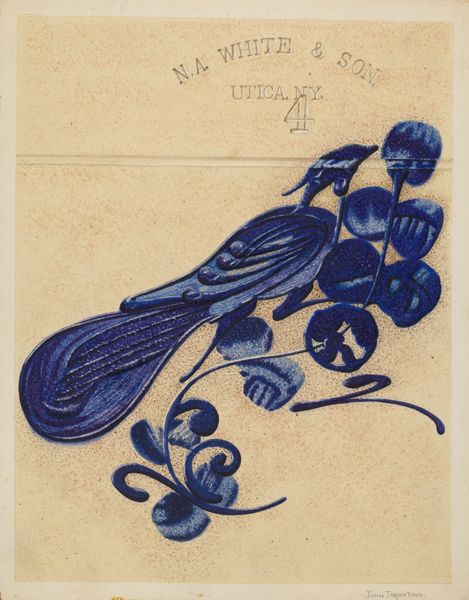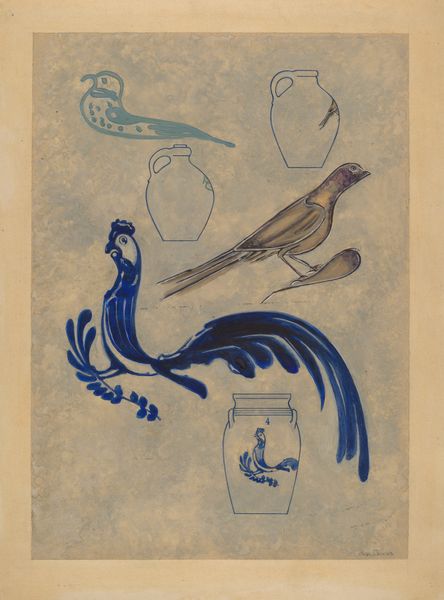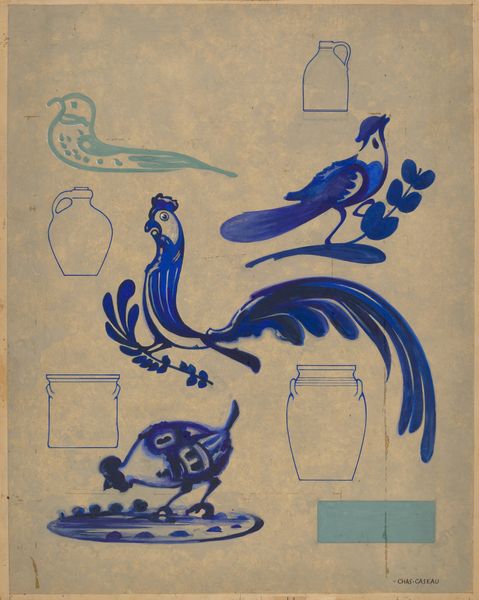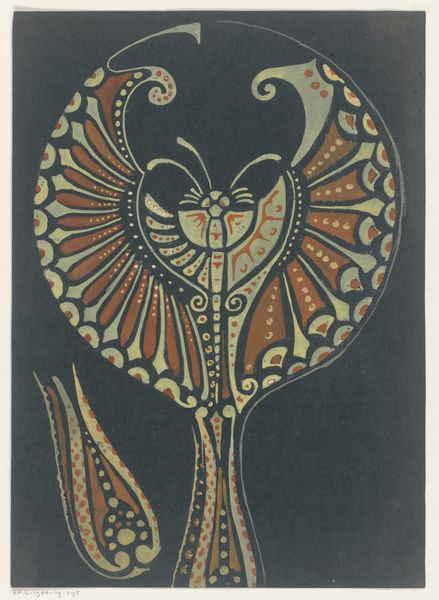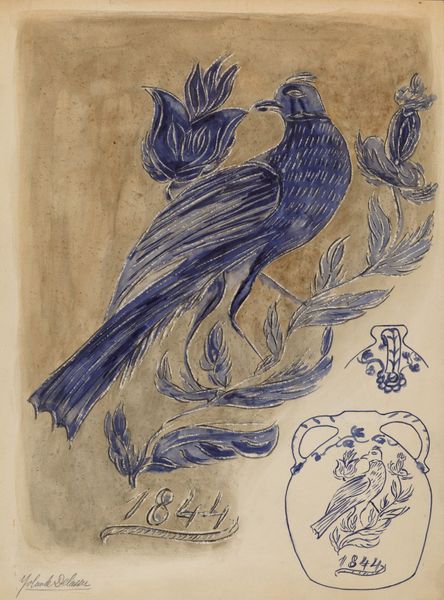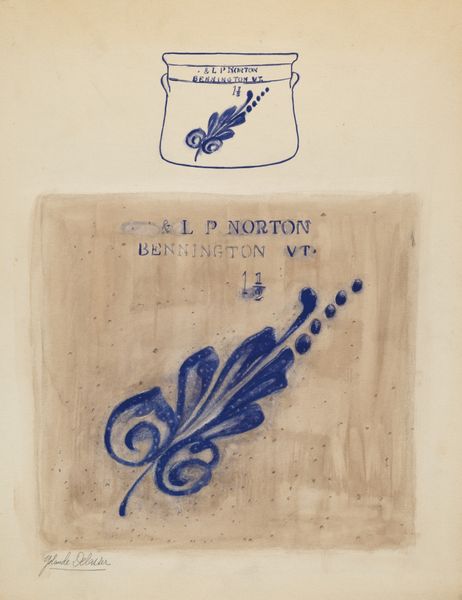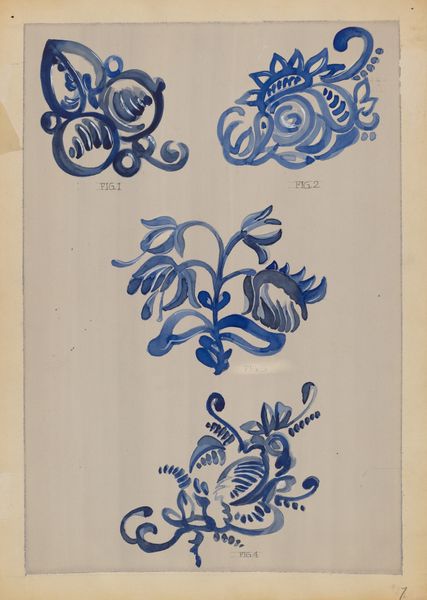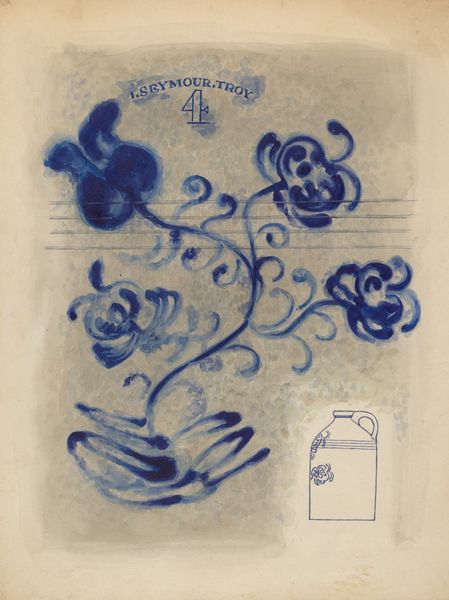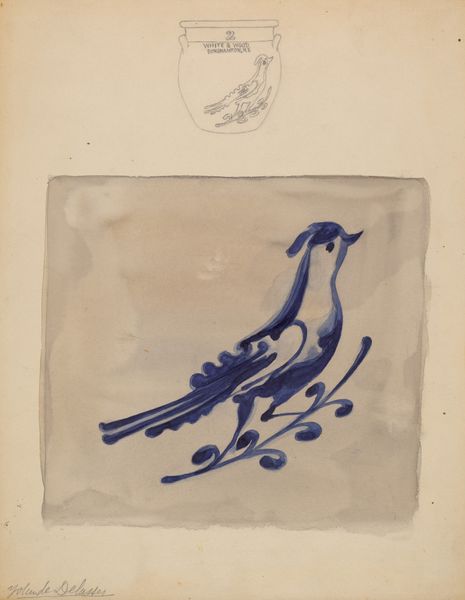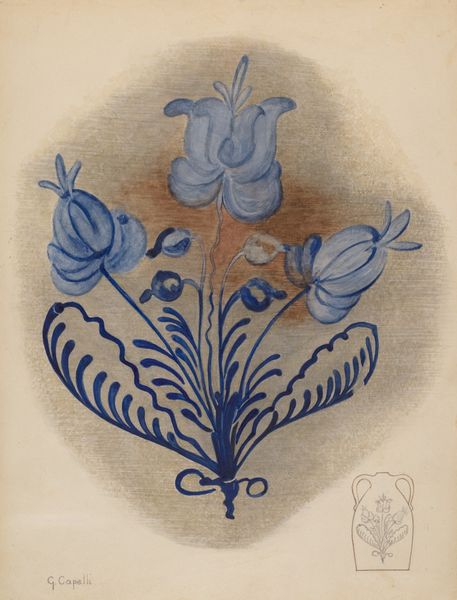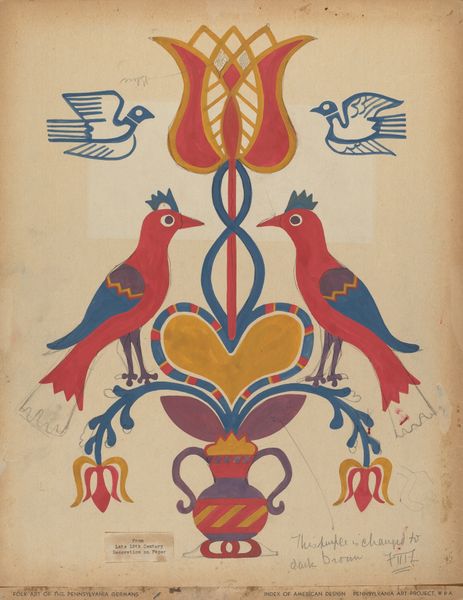
drawing, watercolor
#
drawing
#
landscape
#
figuration
#
watercolor
#
coloured pencil
#
watercolor
Dimensions: overall: 29.2 x 22.6 cm (11 1/2 x 8 7/8 in.) Original IAD Object: 13 3/4" High 7 1/16" Dia(top)
Copyright: National Gallery of Art: CC0 1.0
Editor: This watercolor and drawing piece, titled "Jar" by John Tarantino, dates from around 1937. I'm struck by its somewhat rough quality. The color palette is extremely limited and makes it hard to clearly define the bird as opposed to the plant or jar shapes surrounding it. What stands out to you about this artwork? Curator: Considering Tarantino’s “Jar” through a materialist lens draws attention to the production processes at play. The medium, watercolor and drawing, speaks to accessible and relatively inexpensive means. It’s less about rarefied oil painting and more about democratized art making. Look at how the artist is documenting J. & E. Norton's stoneware of Bennington, Vermont. This work suggests that these were created as drafts or models for mass reproduction rather than fine art objects intended for display in the bourgeois home. Does it seem as if there is a hierarchy being questioned in this piece? Editor: I think so! The artwork almost elevates everyday objects, maybe a celebration of design, production, or utility. I suppose the act of choosing that item and creating a study of its design speaks to how someone perceives what objects are considered beautiful or worthy of display in comparison to others. Curator: Exactly! How does the rendering, this very specific shade of blue against a muted background, contribute to your understanding? Do you think this detail contributes to the artwork and possibly the jar's commodification, or, instead, disrupts the concept? Editor: Interesting, it disrupts it slightly because it gives a folk or craftsy aesthetic. It suggests, again, a hand-made design rather than the streamlined perfection you might associate with a more polished brand. Curator: Precisely. Thinking about how these pieces exist highlights the artist’s contribution to commercial, everyday visual culture of the 1930s. I’m interested in the tensions the work sets up around the original jar, the mass reproduction of design, and the hand-crafted or utilitarian feel of this type of image production, all captured through the selection of its materials and medium. Editor: It gives me a lot to think about. Seeing it as a process rather than a finished, refined statement adds a whole new layer to my appreciation.
Comments
No comments
Be the first to comment and join the conversation on the ultimate creative platform.
